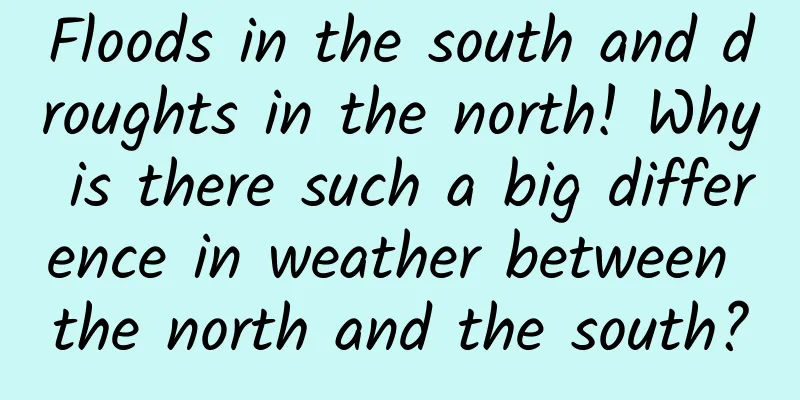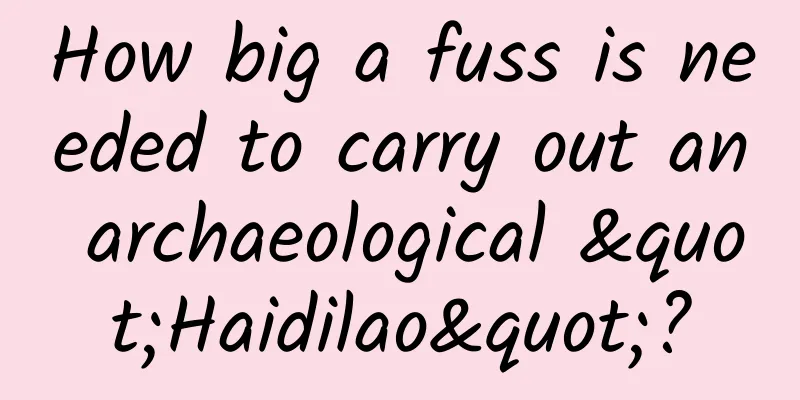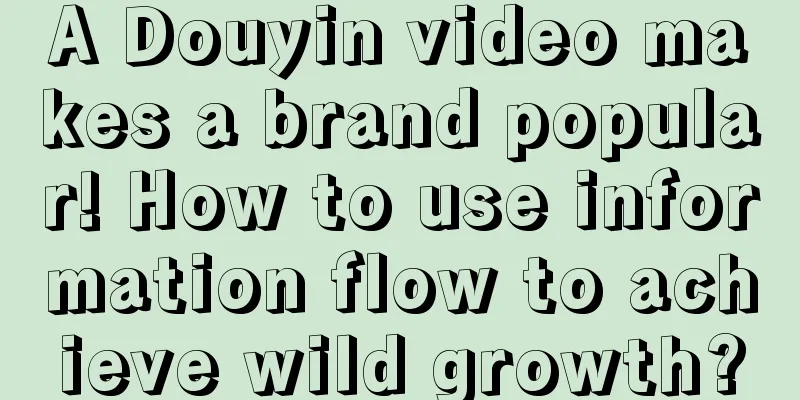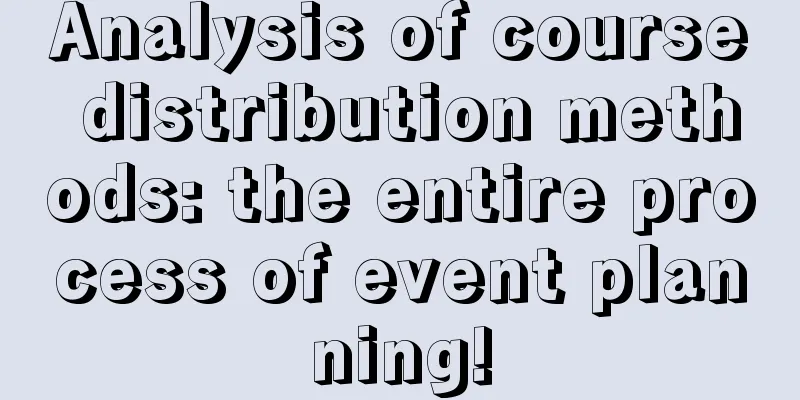Did science stagnate after Einstein?
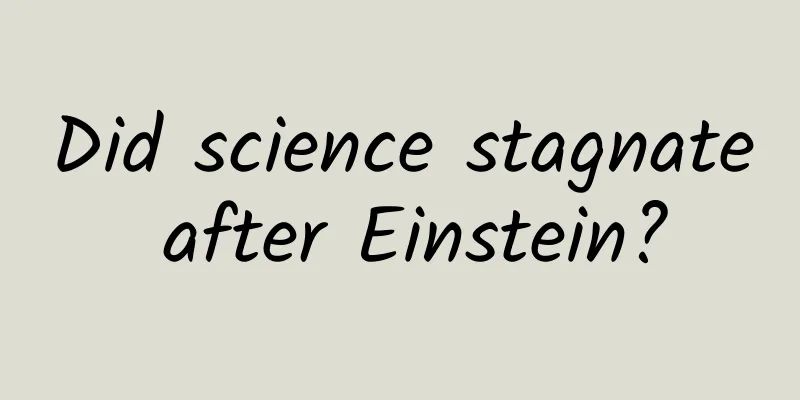
|
There is often such a question on the Internet, which is that since the emergence of Einstein, science has not made any new discoveries and seems to have stagnated. Therefore, some people think that science has reached its limit and is close to the end. Some people even propose that the end of science is philosophy, and the end of philosophy is theology. Others cite a large number of scientific masters who converted to theology in their later years as evidence, such as Newton, Einstein, Yang Zhenning, etc. When they were old, they were obsessed with theological research and became believers. Is this really the case? I just want to speak with facts and share them with my friends. The theories of natural sciences are becoming more and more accurate from classical deduction to empirical verification According to the world history of science, science began in ancient Greece. More than 2,000 years ago, a large number of philosophical and scientific giants emerged in ancient Greece, such as Euclid, Archimedes, Pythagoras, Diophantus, Aristarchus, Aristotle, Plato, Socrates, Thales, Lavoisier, Descartes, etc. In addition to the great achievements in mathematics, mechanics, optics, astronomy, biology, etc. that have influenced us to this day, these scientific pioneers who led history also made significant contributions in philosophy, thought, politics, economics, etc. In fact, ancient Greek science is the product of the combination of philosophy and is called classical science in the history of science. Classical science is more about reaching logical conclusions through thinking and reasoning. Due to the limitations of scientific and technological means at the time, these conclusions were rarely supported by experimental tests and precise observations, so fallacies often occurred, such as Aristotle's belief that the speed of free fall is determined by the weight of the object, and Ptolemy's geocentric theory. Of course, Aristotle obtained the buoyancy theorem through buoyancy experiments, but such empirically verified conclusions are generally rare. It was not until the beginning of the 17th century that natural science research began to pay more and more attention to experiments and experimental methods. The pioneer of this method was the British philosopher Francis Bacon. In his writings, he pointed out that science must be experimental and inductive, and all truths must be supported by a large amount of solid factual material. He also proposed a set of experimental scientific tools and methods, such as the "three tables method". The first person to practice scientific verification was Italian astronomer and physicist Galileo, who is considered the first scientist to introduce experiments into mechanics. He used the astronomical telescope he invented to observe the universe, which greatly advanced Copernicus' heliocentric theory and discovered four satellites of Jupiter. After long-term experimental observation and mathematical calculation, he obtained the isochronism law of the pendulum. He conducted a free fall experiment on the Leaning Tower of Pisa, which disproved Aristotle's fallacy that the speed of free fall is determined by weight. He was also the first person to use experimental methods to measure the speed of light. Galileo's pioneering methods influenced the scientific research of later generations, and from then on led scientific research from classical speculation to the experimental science stage. Based on Galileo's great achievements in astronomy and mechanics, especially his contribution to the study of gravity, he was honored by later generations as the founder of modern European science, the father of observational astronomy, the father of modern physics, the father of scientific method, the father of modern science, and so on. What is science? This question is a long one, and even unclear. But to put it simply, science is the understanding and revelation of natural laws, which are objective natural laws that are not subject to the will of people or political forces. No matter who studies them, what method they use, they can only get a single conclusion. From another perspective, science is also a spirit and method. Only by using the scientific spirit and method to look at problems and explore the world can we discover and make good use of the laws of nature. The spirit of science is to advocate that scientific knowledge comes from practice. The content of practice is to adopt methods recognized by the scientific community, such as qualitative analysis and quantitative analysis, observation and discovery. The results of experimental observations can be repeatedly verified, and evidence is emphasized rather than conjecture. This is the biggest dividing line between science and pseudoscience. Many people attribute the origin of modern science to Copernicus because he was the first to use scientific methods to discover the fallacy of Ptolemy's geocentric theory and proposed the heliocentric theory. This was contrary to his own beliefs as a clergyman, but he insisted on the scientific spirit. Science is not subject to human will. In fact, he also recognized that science is not subject to God's will. Because through constant observation and calculation, he discovered that the Earth and other planets revolve around the Sun, rather than the Sun revolving around the Earth. This accurately explained the movement of the Sun, Moon and major planets, and solved the mystery of lunar and solar eclipses. Copernicus' heliocentric theory had a huge impact on the world's ideas, especially shaking the religion's adherence to Ptolemy's geocentric theory for thousands of years, and also touched the foundation of creationism, causing anger and suppression in the religious community. As a result, Copernicus' life was rough, his beloved wife was forced to leave him, and later he was expelled from the country. As a devout Catholic priest, Copernicus witnessed the church's frenzied persecution of so-called "pagans" and the burning of many people alive. Therefore, he did not dare to publish his own works until two years before his death, when he published his groundbreaking work "On the Revolutions of the Celestial Spheres". After Copernicus' death, his heliocentric theory was recognized by many scientists, but the persecution by the church became increasingly cruel. Bruno, an Italian thinker, philosopher, and scientist, was considered a heretic by the church because he promoted and defended the heliocentric theory, and was sentenced to be burned alive in the Campo de' Fiori in Rome; and Galileo was also "strongly suspected of heresy" by the Inquisition because he supported the heliocentric theory, and was sentenced to life imprisonment until he died of depression. It can be seen that the history of science is full of duels between ignorance and light, and many scientific pioneers were slaughtered by darkness. But science is science, and it is not subject to anyone's will. Even Copernicus, Bruno, and Galileo, who were deeply influenced by religion and doctrine, insisted on the truth regardless of everything once they discovered it, and objectively became the gravediggers of creationism. Although it seems today that the operation of the universe is far beyond the scope of the heliocentric theory, Copernicus's theory has revealed the tip of the huge iceberg of the universe and has also provided a lot of guidance and inspiration for future generations on the scientific path. Therefore, it is no exaggeration to say that Copernicus is a pioneer of modern science. A century of brilliant science In the history of modern science, people usually regard Galileo, Newton and Einstein as the founders of modern science. They represent the beginning of a scientific era, and their theories or methods led human civilization for a period of time. Indeed, the discoveries and theories of these masters have made a breakthrough in human understanding of the world and led to a large number of scientific advances and breakthroughs. However, these masters are not aliens from heaven, but real humans born and raised on Earth. Their new discoveries and theories are also based on the discoveries and achievements of generations of scientific pioneers. For example: in Galileo's era, there were Copernicus, Bruno, Tycho, Kepler, Harvey, etc.; in Newton's era, there were Boyle, Halley, Descartes, Huygens, Coulomb, Ohm, Franklin, Faraday, etc.; in Einstein's era, there were even more, such as Michelson, Maxwell, Hertz, the Curies, Planck, Schrödinger, Bohr, Pauli, Fermi, Heisenberg, etc. There are many more, too numerous to mention. Each of these names is well-known and can be called a master in a certain field. Almost all of the people before and after Einstein mentioned above were contemporaries of Einstein. After Einstein's death, what other famous scientists were there? Yang Zhenning, who is now 100 years old, is a world-class scientist who is still alive. Among all living scientists, his status is unmatched. He and Tsung-Dao Lee established the "Law of Parity Nonconservation", for which they won the 1957 Nobel Prize in Physics. If that were all, he would certainly not have his current status. Yang Zhenning also discovered and established more than a dozen world-leading theories, including phase change theory and gauge field theory, and won many world-class awards. Among his research results, at least 13 are at the Nobel Prize level. Among the scientists who have won the Nobel Prize in Physics, at least 60 scientists are Yang Zhenning's disciples, or their research results are related to his theories. Yang Zhenning's theory is within the scope of Einstein's theory of relativity and quantum mechanics, but it is not an explanation of the theoretical foundations of these theories, but a breakthrough and new discovery. Later, Weinberg, Glashow, and Salam used non-Abelian gauge fields to describe the electroweak interaction, thus unifying the weak interaction and the electromagnetic interaction and won the 1979 Nobel Prize. The realization of a grand unified force theory was Einstein's dream, and he kept trying to achieve it in his later years but was never able to do so. Although he only unified the two forces, weak and electric, it was already a major breakthrough. Later, scientific research achieved one breakthrough after another. For example, Gell-Mann and Zweig respectively proposed the theory that hadrons are composed of quarks, which allowed them to peek into the microscopic world at a deeper level; the discoveries of quasars, pulsars, black holes, cosmic microwave background radiation, gravitational lenses, etc., have given us an increasingly thorough understanding of the macroscopic world of the universe. There are also milestone scientific events in superconductor research, the discovery of the quantum Hall effect, neutrino oscillation, gravitational waves, and other landmark scientific events. In-depth research on quantum mechanics and quantum communications has pushed modern science to a higher stage of development. After Einstein's death in 1955, science has never stopped but has developed at a faster pace. The whole society has moved from mechanization to electrification, and then to automation, informatization, and intelligence. Now human science and technology have entered the fast lane, and scientific progress has exploded exponentially. Today, one year is faster than hundreds or even thousands of years in ancient times. Is the end of science theology? Science and theology are two completely different things. One is something that relies on practice to verify and is a symbol of historical development and progress; the other is something that is far-fetched and is a relic left over from the ignorant era. In recent years, some people cannot understand some strange phenomena in quantum mechanics and attribute them to theology. If science is really like this, then it is really at the end of the road. The fact is that science and theology are two parallel lines that will never intersect. It was because some enlightened people among the theological believers, who were called "rebels" and "heretics" by the Vatican, began to separate science from theology and became the gravediggers of creationism, such as Copernicus, Bruno, Galileo, Newton, etc. In fact, the above-mentioned scientific masters were faithful believers of God when they were alive. It was only because they adhered to the scientific spirit and scientific methods and discovered the truth of the universe that they objectively betrayed their own doctrines and became "heretics" hated by religious organizations. But they were still believers of God until their death, and there was no such thing as converting to theology in old age. According to some survey statistics, modern scientists are increasingly detaching from religious beliefs and no longer believe in gods or ghosts. Einstein left the religious organization when he was in junior high school. The materials he left behind and the letters he wrote to his relatives and friends fully expressed his attitude towards religion and gods such as God, that is, he did not recognize personal gods. In his last will, he instructed that after his death, he would not leave ashes and a grave, so that future generations would not use his relics to engage in superstitious activities. Yang Zhenning's remarks were once widely circulated on the Internet: "The end of science is philosophy, and the end of philosophy is religion." After investigation, it was found that it was said by a man named Yang Zhenhua, who published an article in a Buddhist journal titled "Yang Zhenning: Buddhism and Science are Completely Compatible." In an interview, Yang Zhenning stated that this article had nothing to do with him. Yang Zhenning also hates metaphysics, and believes that the Book of Changes has influenced the Chinese way of thinking, which has prevented modern science from taking root in China. Zhang Shuangnan, director of the Key Laboratory of Particle Astrophysics at the Chinese Academy of Sciences, agrees with this statement. In a speech, he said that it is precisely because of these reasons that real science has not yet emerged in China. Why are there always rumors that scientists are converting to theology? This is easy to understand, because in the battle between science and ignorance, science has already won. But ignorance is unwilling to be swept into the garbage dump, and always wants to pull a fig leaf to cover up the stench of decay, so it fabricates these rumors. Is there an end to science? The fact is, science never stops, there is no end to science. If we look back at the history of scientific development, every dramatic change is the result of long-term quantitative changes. When many contradictions cannot be resolved, new breakthroughs will appear. For example, the new discoveries of Copernicus and Galileo in astronomy brought people new problems: how to explain the movement of celestial bodies? As a result, Kepler's three laws and Newton's theory of universal gravitation appeared. In the early 19th century, two dark clouds appeared in the physics community, bringing crises to physics. One was the Michelson-Morley experiment, which broke the ether theory and had no new theory to fill it; the other was the "ultraviolet catastrophe" of blackbody radiation, which was inconsistent with the theory and experiment and also needed a new theory to explain. The emergence of Einstein's theory of relativity dispelled the first dark cloud; and the theory of quantum mechanics created by Planck and others dispelled the second dark cloud. Now, basic science also urgently needs breakthroughs, because physics is facing more and more dark clouds. The compatibility issue between relativity and quantum mechanics, the issue of dark matter and dark energy, the problem of strange phenomena in the quantum world, the problem of vacuum catastrophe, where the universe and humans come from and where they are going, etc., all call for new basic theories to explain. Therefore, scientists are racking their brains and working hard. However, the qualitative change in the future can only come from quantitative changes in small breakthroughs. Every time a problem is solved, people will have a deeper understanding of the laws of the universe. When these understandings accumulate to a certain depth, a major breakthrough will occur and a new era will arrive. According to the theory of three-level civilization in the universe, human science and technology are still at a very early stage, not even reaching the first level of civilization. How could it be that it has reached its end? The day when it really reaches its end is when humans have no more ideas and stop striving for progress. The most profound expression of human genes is the curiosity to explore the world, so the end of science will never come. Only when humans reach the first level of civilization can they utilize all the resources on Earth and deal with all the disasters on Earth. Can they do that now? No, it is still a long way off. So humans still need to work hard to climb this small peak. According to some scientists, it will take another 200 years for humans to reach the first level of civilization. Level II civilization means that humans can control and utilize the energy of the entire solar system, including all the energy of the sun, and no longer fear any disasters from the solar system. With the current technology of human beings, we dare not even think about this ability. If the sun sneezes a little (a larger flare), human beings will be in trouble. Some people estimate that it will take another 5,000 years for human beings to climb to the peak of level II civilization. I don’t want to think about the third level civilization now. No one knows how long it will take. It’s hard to say whether it will take 100 million years or 1 billion years. Even if we reach the third level civilization, there will still be higher levels of civilization until we are destroyed. And how to deal with destruction still depends on technology. So the idea that science and technology have reached their end is really naive. Maybe some people have eaten too much melon and feel that they always have to find something to talk about. My point of view is: science has no end and is always on the road. Welcome to discuss, thank you for reading. The copyright of Space-Time Communication is original. Infringement and plagiarism are unethical behavior. Please understand and cooperate. |
Recommend
App Fairness Alliance launches initiative to make iOS app distribution like Windows
The nonprofit Coalition for App Fairness wants to...
Plants: If I don’t catch the “mutation”, I will be the “lamb to be slaughtered”…
Produced by: Science Popularization China Author:...
Maggie Cheung's movie video collection, all the movies she has acted in, movies co-starred by Stephen Chow and Maggie Cheung, Baidu network disk resource sharing
Maggie Cheung is an artistic actress who has esta...
The new domestically produced Mercedes-Benz GLC will be lengthened. Do you want to remove the L logo?
Recently, the information of the Ministry of Indu...
"Lost in Russia" is available for free online. Who did Xu Zheng offend?
This Spring Festival is so special. It is so spec...
The latest regulations on the 2022 delayed retirement age policy: When will it be officially implemented?
In recent years, the issue of pension has receive...
What should we pay attention to when using Tik Tok’s self-service massive Qianchuan brand promotion? How to create a massive promotional video for Tik Tok?
Douyin merchants can set up self-service delivery...
A hero may not always ride on colorful clouds, but may ride on a small boat...
Recently, Xinyang City, Henan Province A young ma...
Care for the mental health of teenagers! If someone paid more attention, the outcome might be different...
On February 2, a press conference on the Hu Xinyu...
Be aware that feeling tired for no reason may be a sign of illness!
Some people are full of energy every day, while o...
Why can H5 continue to dominate the screen?
No matter which industry you are in, you can alwa...
Nezha of the people, created by the people! An open letter from Nezha Auto's Zhang Yong to users
On June 22, Nezha Auto held a "Creation"...
Today is the Winter Solstice | Snow is falling outside the window in the dead of winter, and the house is warm and cozy
"The stars turn and the frost spreads overni...
What is the necessity for businesses to develop mini programs?
The current mini program market is developing mor...
The correct way to enjoy the "autumn coolness": first grasp the "personality" of Bailu
Bailu is the fifteenth solar term in the twenty-f...
